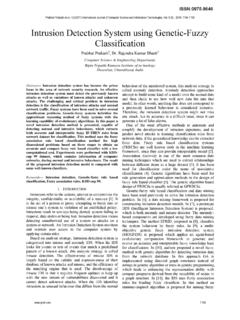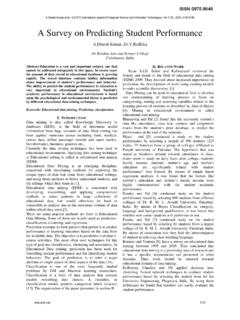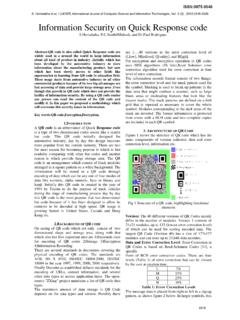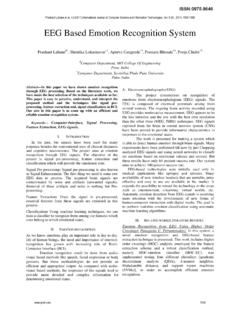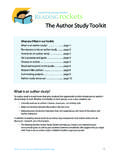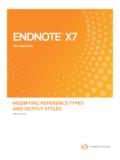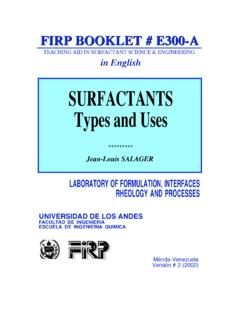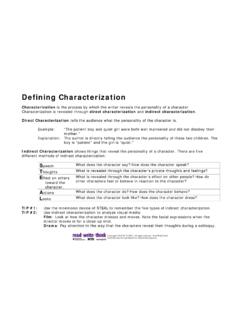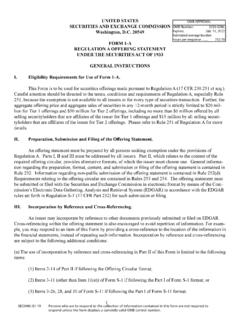Transcription of Localization of License Plate using Characteristics …
1 Localization of License Plate using Characteristics of alphanumeric Characters Pushpendra Singh Chouhan , V. K. Govindan Computer Science and Engineering Department, NIT Calicut Kerala, India Abstract Automatic Number Plate Recognition (ANPR) system provides the identity of vehicles based of number Plate recognition. This paper presents a characteristic based methodology for Localization of Indian number plates. Since number Plate standards are not strictly practiced in India, a large amount of variations are obtained in parameters like, size and characters of number Plate , location of number Plate , type of License Plate like single row or double row License Plate , type of font used, background and foreground color, etc.
2 All these variations make the task of number Plate Localization all the more difficult. alphanumeric characters have specific Characteristics in binary image. An approach for Localization of License Plate using those Characteristics is presented. The results demonstrate an accuracy of 90%. Keywords Inverted L masking, Reverse L filter, white pixel density, Position filter, Otsu s algorithm. I. INTRODUCTION In Recent years, it has been noticed that a large number of vehicle are getting stolen. To assist authorities, researchers introduced various methods to detect the characters and numerals in Plate number of various types of vehicles.
3 Automatic vehicle number Plate recognition (ANPR) was invented in 1976 at the Police Scientific Development Branch in United Kingdom for safety and security. The prototype was implemented in 1979. Automatic recognition of License Plate system was commonly used in parking lot areas and road traffic monitoring system. In this system, an image can be obtained from the static object and moving object. Thus, two types of image of vehicle Plate can be captured. The steps involved in recognition of a License Plate are Image acquisition, License Plate extraction, Segmentation, and Recognition.
4 Image acquisition is the first step in an ANPR system. The current literature discusses different image acquisition methods. Naito et al. [1] developed a sensing system, which uses two CCDs (Charge Coupled Devices) and a prism to split an incident ray into two lights with different intensities. The proposed system uses a high resolution Infra Red (IR) camera for image acquisition. Different approaches for the extraction of the License Plate depending upon the back ground color of the image are presented. Hontani et al. [2] proposed a method for extracting characters without prior knowledge of their position and size in the image.
5 Kulkarni [3] presents a feature based methodology for Localization of Indian number plates. Park et al. [4] devised a method to extract Korean License Plate depending on the color of the Plate . The proposed approach uses Characteristics of alphanumeric characters present in binary image of vehicle. This approach involves four steps, Inverted L masking, Reverse L filtering, white pixel density and, position filter. In the Segmentation phase, individual characters are isolated from the License Plate . Various approaches have been proposed in the literature. Zhang [5] proposed an algorithm for character segmentation, using Hough transformation and the prior knowledge in horizontal and vertical segmentation respectively.
6 Kahraman [6] presents a novel algorithm for License Plate detection and License Plate character segmentation problems by using the Gabor transform in detection and local vector quantization in segmentation. Recognition of characters is the last phase in the ALPR system. A wide variety of approaches have been considered for individual character recognition. Mei Yu et al. [7] and Naito et al. [1] used template matching. The paper is organized as follows: Section II presents the preprocessing, binarization and the number Plate Localization techniques. Section III describes the experimentation and testing, and finally the paper is concluded in Section IV.
7 II. PROPOSED Localization APPROACH The process of Localization involves four steps as shown in figure 1. The first three steps are based on general Characteristics of alphanumeric characters and the last step is based on relative position of characters in License Plate . The input image to the proposed algorithm is the adaptively binarized image using Otsu s algorithm. Initially an inverted L mask is rolled over the entire input image to find the probable character locations. After this a reverse L filter is used to find the false character locations which can contains duplicate alphanumeric characters due to smaller objects present around the characters of License Plate .
8 White pixel density is used for eliminating false character locations on the basis of white pixels in probable character locations. Position filter is used to remove the false character location by checking row values of probable character locations. This approach will be further elaborated in subsections to follow. Figure Localization Approach Pushpendra Singh Chouhan et al, / (IJCSIT) International Journal of Computer Science and Information Technologies, Vol. 5 (3) , 2014, PREPROCESSING Input image of the number Plate is pre-processed for the removal of background noise. The pre-processed image is binarized to make it suitable for localising the number Plate .
9 Otsu s algorithm [5] is employed to for fast binarization. The output of Otsu s algorithm is given in figure binarized image is used as a input in Localization of License Plate . Figure of Otsu's Algorithm B. Localization OF License Plate Steps based on Characteristics of alphanumeric characters are applied to shortlist the probable character locations from the binary image as explained above. alphanumeric characters have specific properties in binary image such as size, white pixel density, atomicity etc. The steps of proposed approach for Localization of License Plate from an image are explained below. Inverted L Masking Mask having shape of inverted L and size equal to maximum probable character size is rolled on the binary image shown in figure 2 and at each position if following conditions are satisfied that position is shortlisted as a probable character location: a) All pixels in first row and first column of a box should be black.
10 B) There should be at least a single white pixel on second row and second column of a box. Figure of Inverted 'L' masking Figure 3 shows output of Inverted L masking. Reverse L Filter As the size of mask in Inverted L masking is fixed and equal to maximum probable character size, the smaller objects will also get shortlisted with some part of character of License Plate which satisfies the conditions of Inverted L masking for short listing probable character locations. This step is used to detect those smaller objects which are near to the characters of License Plate . If there will be any row or column except first which contains all black pixels, then Reverse L filter treats that row or column as an end of an alphanumeric character in row side or column side and converts all white pixels in rest of rows or columns after that row or column into black for that probable character location.


